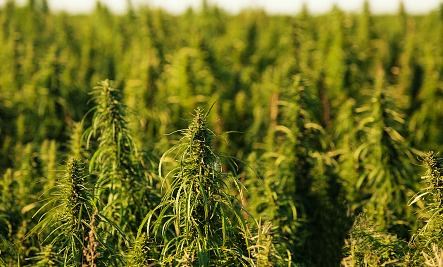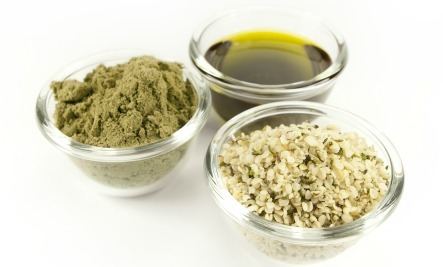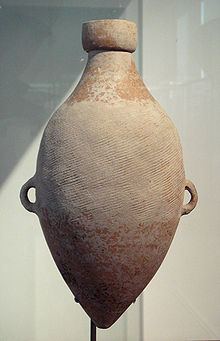LittleDabbie
Supporter
- 11,813
- 438
Hemp is a controversial crop, but it’s one that holds much promise as a food, fiber and as a fuel. Because hemp is a cousin to marijuana it gets an undeservedly bad reputation from the legal folks in government. But it’s increasingly clear that hemp is a valuable crop and needs to be taken out of legal purgatory.
Just how valuable can this little plant be? How about $620 million (about $200M of which was food products alone), as estimated by the Hemp Industries Association (HIA), a non-profit trade group representing hemp companies, researchers and supporters. President Obama passed legislation to allow hemp to grow for research purposes, but it is still only allowed to grow in 21 states. There is, however, mounting pressure to legalize industrial hemp growing in the US.
Mike Fata of Manitoba Harvest, a hemp foods company based in Canada, has been working with hemp (and hemp legalization efforts) since 1998. After working through the advocacy and legalization process in Canada, they offer their experience and expertise to support legalization efforts in America. Fata says that legalizing industrial hemp in the US will be excellent for the overall industry, so the company tries to get involved and help as much as possible. He and his team work hard to educate on the benefits of hemp; he says, “We are constantly trying to educate on the hemp industry through speaking engagements, trainings or workshops, events [and] Manitoba Harvest is a founding sponsor of Hemp History Week – an awareness and advocacy campaign to encourage US hemp legalization.”
Why is it important to legalize hemp?
There are so many uses for hemp! Hemp can be used as fiber for ropes, sails, paper and even to make super soft, beautiful clothing. The oil pressed from the seeds can be used as fuel, and the whole plant can be turned into ethanol. Hemp can also be used for phytoremediation to clean up soil contamination. And hemp can be used to make bricks known as ‘hempcrete,’ build insulation for floors and roofs, andpressboard for furniture. Finally, hemp also needs few, if any, pesticides to grow, as there are few insects that chooses to nest with hemp, so it’s a super sustainable crop.
It seems pretty crazy that this wonder-plant is currently classified as a Schedule 1 narcotic, alongside marijuana, heroin, LSD and other hard drugs. Although it’s technically legal to grow hemp in the US for research purposes, it can be very difficult to get a permit from the DEA. Ignore the folks that say hemp contains THC, the psychoactive compound found in marijuana– it is present in amounts so teeny as to be invisible (in fact, smoking hemp can give you a big headache).

Hemp can be a healthy (and delicious) addition to your diet
Is there any other plant that can make a claim to all these cool uses above and still be a super delicious food? The edible part of the hemp plant is the tiny seed found inside a non-edible hull. What makes seeds so nutritious is the rich oils found inside, known as omega fatty acids. The oils are beneficial because of their natural balance of essential fatty acids at 3.75:1, which is exactly what our body needs! Most oils on the market are omega 6 (like corn, soy, and canola), which are pro-inflammatory, but fatty acids like those found in hemp work as antioxidants and can help reduce inflammation. And just one tablespoon of hemp seed oil provides you with all the fatty acids you need in your daily diet.
Hemp is also a great source of protein. Research shows that hemp seeds are a complete protein, meaning they contain all the amino acids we need for our bodies to build protein.
Because of the balance of protein, fat and fiber, hemp can be a healthful addition to your diet. Mike Fata, the hemp advocate and the founder of Manitoba Harvest, has this to say about his radical transformation that he credits to hemp foods:
“I used to weigh over 300 pounds. Sick and tired of being ‘sick and tired,’ I initially turned to the no-fat diets that were so popular [years ago]. Through extreme dieting and frequent exercise I began to lose weight yet still felt… depleted. In my nutrition research, I read about hemp oil in the bookFats That Heal, Fats That Kill. The moment I tried hemp and started incorporating it into my diet, I basically fell in love. Protein, rich and rare omegas, an extensive profile of vitamins and minerals, and a delicious slightly nutty taste – I wanted to share hemp foods with everyone.”
His success with hemp foods inspired him to build his business exclusively on hemp foods to help others fall in love with hemp foods too.

How can you use hemp?
You can use hemp in lots of ways around the kitchen. The slightly sweet, mildly nutty seeds are tiny, but can be eaten out of hand for a quick snack, used atop oatmeal, in smoothies or acai bowls. My favorite way to use hemp is to sprinkle onto salads; the natural oils and soft texture is a delicious addition.
You can also use hemp oil in your diet to get an extra hemp boost. This oil is found in the refrigerated section of grocery stores as it’s perishable (if it’s on the shelf with other oils, tell the store manager to move it to the fridge!). Hemp oil is not for cooking, but can be used as a fragrant, green drizzle on top of salads, steamed veggies, or blended into dressings. Manitoba Harvest also makes a protein powder made from hemp, which is an easily digestible protein. Hemp protein powder is a great alternative forplant-based athletes or those looking to up their protein intake. Here are five other ways to add hemp to your diet.
In an interview, Fata shared one of his favorite recipes for hemp butter. To make hemp butter, blend or process 1 cup Hemp Hearts with 2 Tablespoons of hemp oil until smooth and creamy. He says he sometimes adds a date, a bit of local honey or cacao powder for sweetness. Store your hemp butter in the fridge to keep it fresh.
http://www.care2.com/greenliving/he...4304012472902&action=expand_widget&id=0&data=
Just how valuable can this little plant be? How about $620 million (about $200M of which was food products alone), as estimated by the Hemp Industries Association (HIA), a non-profit trade group representing hemp companies, researchers and supporters. President Obama passed legislation to allow hemp to grow for research purposes, but it is still only allowed to grow in 21 states. There is, however, mounting pressure to legalize industrial hemp growing in the US.
Mike Fata of Manitoba Harvest, a hemp foods company based in Canada, has been working with hemp (and hemp legalization efforts) since 1998. After working through the advocacy and legalization process in Canada, they offer their experience and expertise to support legalization efforts in America. Fata says that legalizing industrial hemp in the US will be excellent for the overall industry, so the company tries to get involved and help as much as possible. He and his team work hard to educate on the benefits of hemp; he says, “We are constantly trying to educate on the hemp industry through speaking engagements, trainings or workshops, events [and] Manitoba Harvest is a founding sponsor of Hemp History Week – an awareness and advocacy campaign to encourage US hemp legalization.”
Why is it important to legalize hemp?
There are so many uses for hemp! Hemp can be used as fiber for ropes, sails, paper and even to make super soft, beautiful clothing. The oil pressed from the seeds can be used as fuel, and the whole plant can be turned into ethanol. Hemp can also be used for phytoremediation to clean up soil contamination. And hemp can be used to make bricks known as ‘hempcrete,’ build insulation for floors and roofs, andpressboard for furniture. Finally, hemp also needs few, if any, pesticides to grow, as there are few insects that chooses to nest with hemp, so it’s a super sustainable crop.
It seems pretty crazy that this wonder-plant is currently classified as a Schedule 1 narcotic, alongside marijuana, heroin, LSD and other hard drugs. Although it’s technically legal to grow hemp in the US for research purposes, it can be very difficult to get a permit from the DEA. Ignore the folks that say hemp contains THC, the psychoactive compound found in marijuana– it is present in amounts so teeny as to be invisible (in fact, smoking hemp can give you a big headache).

Hemp can be a healthy (and delicious) addition to your diet
Is there any other plant that can make a claim to all these cool uses above and still be a super delicious food? The edible part of the hemp plant is the tiny seed found inside a non-edible hull. What makes seeds so nutritious is the rich oils found inside, known as omega fatty acids. The oils are beneficial because of their natural balance of essential fatty acids at 3.75:1, which is exactly what our body needs! Most oils on the market are omega 6 (like corn, soy, and canola), which are pro-inflammatory, but fatty acids like those found in hemp work as antioxidants and can help reduce inflammation. And just one tablespoon of hemp seed oil provides you with all the fatty acids you need in your daily diet.
Hemp is also a great source of protein. Research shows that hemp seeds are a complete protein, meaning they contain all the amino acids we need for our bodies to build protein.
Because of the balance of protein, fat and fiber, hemp can be a healthful addition to your diet. Mike Fata, the hemp advocate and the founder of Manitoba Harvest, has this to say about his radical transformation that he credits to hemp foods:
“I used to weigh over 300 pounds. Sick and tired of being ‘sick and tired,’ I initially turned to the no-fat diets that were so popular [years ago]. Through extreme dieting and frequent exercise I began to lose weight yet still felt… depleted. In my nutrition research, I read about hemp oil in the bookFats That Heal, Fats That Kill. The moment I tried hemp and started incorporating it into my diet, I basically fell in love. Protein, rich and rare omegas, an extensive profile of vitamins and minerals, and a delicious slightly nutty taste – I wanted to share hemp foods with everyone.”
His success with hemp foods inspired him to build his business exclusively on hemp foods to help others fall in love with hemp foods too.

How can you use hemp?
You can use hemp in lots of ways around the kitchen. The slightly sweet, mildly nutty seeds are tiny, but can be eaten out of hand for a quick snack, used atop oatmeal, in smoothies or acai bowls. My favorite way to use hemp is to sprinkle onto salads; the natural oils and soft texture is a delicious addition.
You can also use hemp oil in your diet to get an extra hemp boost. This oil is found in the refrigerated section of grocery stores as it’s perishable (if it’s on the shelf with other oils, tell the store manager to move it to the fridge!). Hemp oil is not for cooking, but can be used as a fragrant, green drizzle on top of salads, steamed veggies, or blended into dressings. Manitoba Harvest also makes a protein powder made from hemp, which is an easily digestible protein. Hemp protein powder is a great alternative forplant-based athletes or those looking to up their protein intake. Here are five other ways to add hemp to your diet.
In an interview, Fata shared one of his favorite recipes for hemp butter. To make hemp butter, blend or process 1 cup Hemp Hearts with 2 Tablespoons of hemp oil until smooth and creamy. He says he sometimes adds a date, a bit of local honey or cacao powder for sweetness. Store your hemp butter in the fridge to keep it fresh.
http://www.care2.com/greenliving/he...4304012472902&action=expand_widget&id=0&data=






